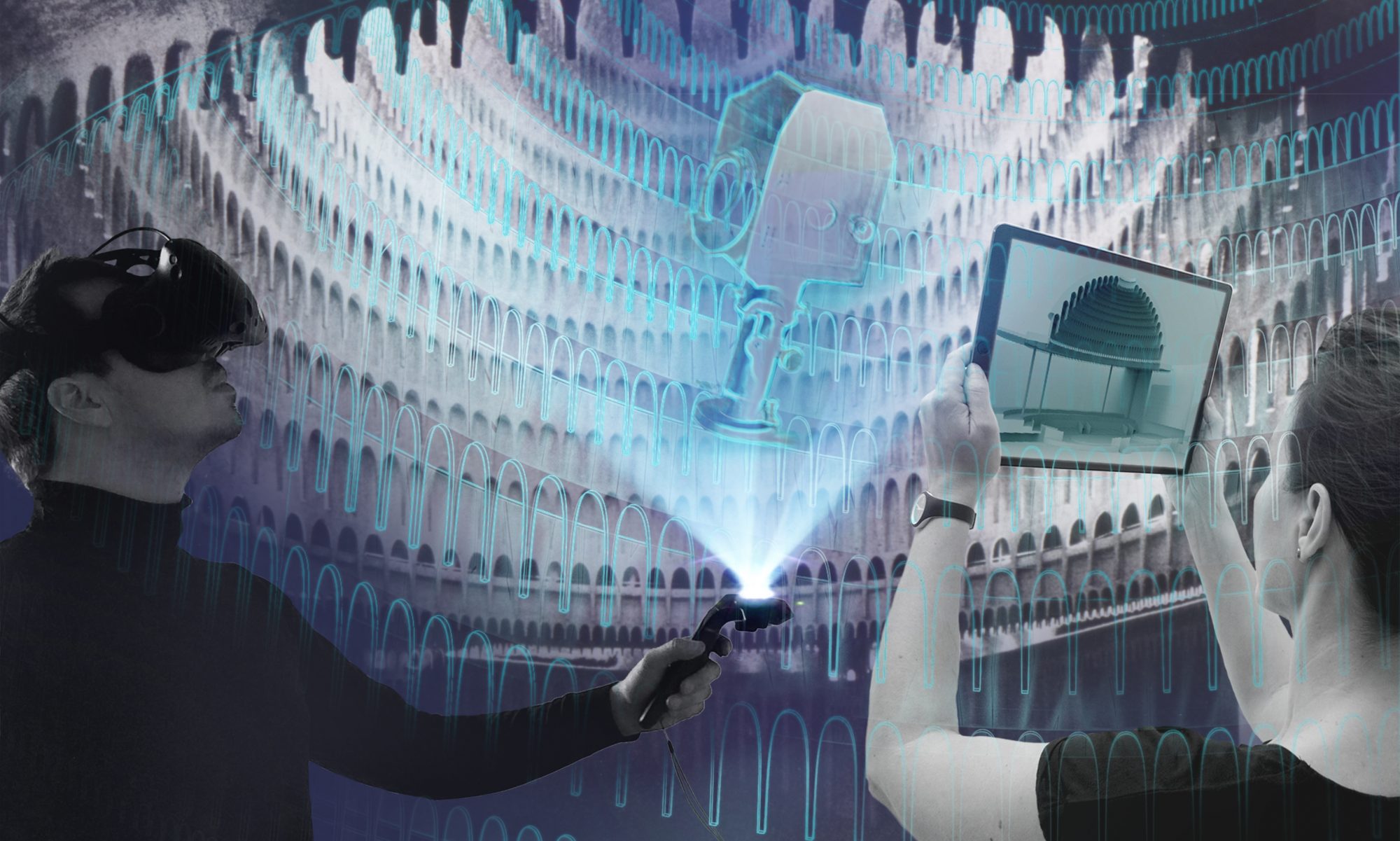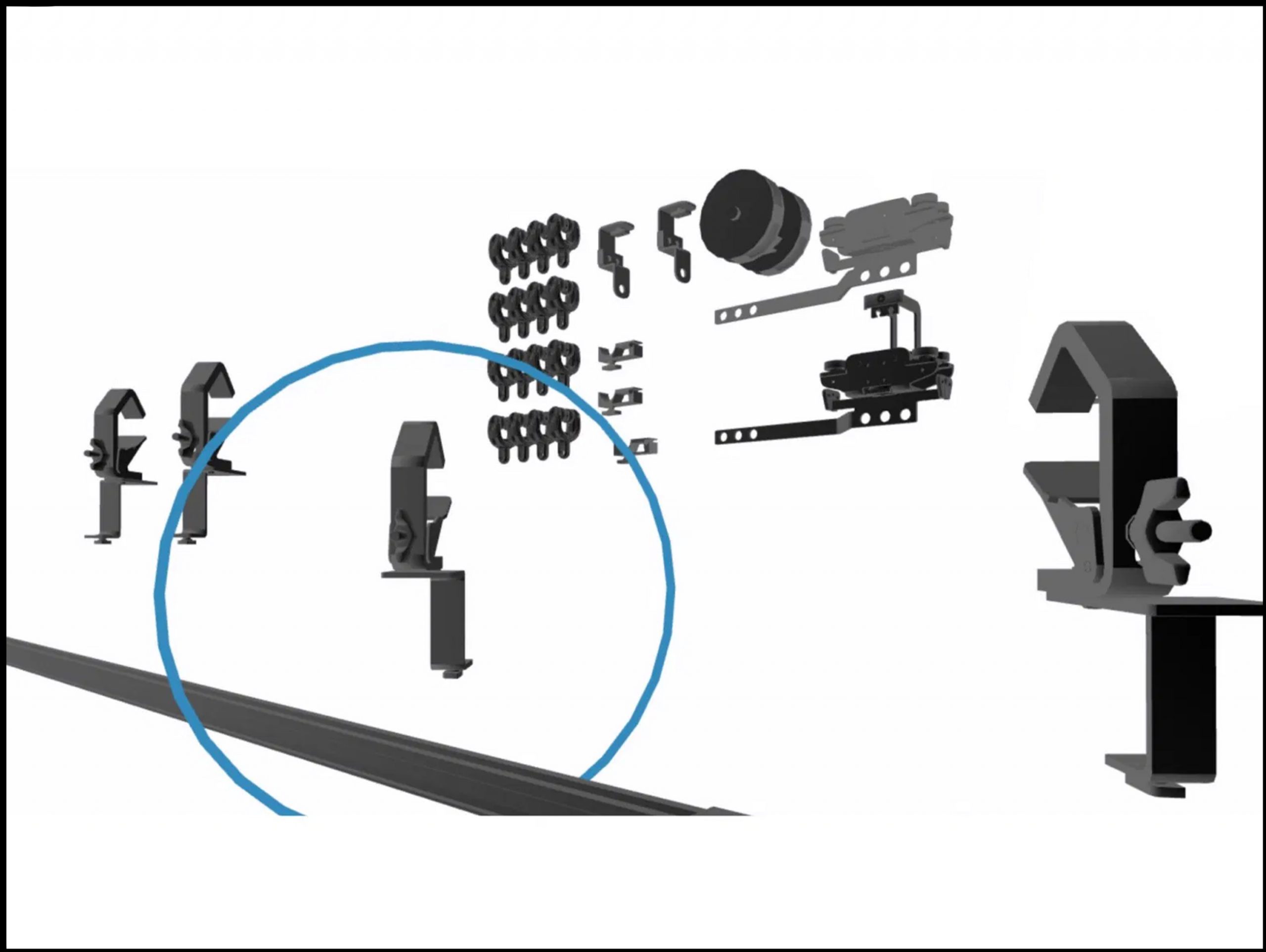The solutions we developed as part of the research project “Im/material Theatre Spaces” (2019-2022) serve as sustainably transferable concepts due to their prototypical model character. The gained insights and developed model solutions were published on various channels and are made available to the entire cultural landscape for free and flexible use.
Licenses
For this purpose, all software developments created in the research project appear under an open source license (GNU GPL, MIT License, etc.). If partial components subject to licensing (plug-ins, copyrighted image and sound documents, etc.) were used in the overall work, we make the newly developed code components available as open source without the components subject to licensing. In the code documentation, we refer to the license-required subcomponents.
Open source code of prototypes and sample solutions
We primarily use Github as a platform for publishing source code: https://github.com/digitaldthg. Some of our projects are hosted on the DTHG web server due to very high data volumes.
Augmented Reality in event technology
Interactive user manuals of complex constructions and systems
Highly complex equipment is used in the event sector and on theater stages. The technologies and products used are so diverse that their operation cannot be taught comprehensively in training. In addition, assembly and operating instructions available as paper documents are often too unspecific and – especially in the working environment on stage – impractical to handle. At this point, digital instructions can support the work of stage technicians and create a decisive added value by increasing the readability of digital 3D models.
As a basis for a practical examination of the requirements of such assembly aids and for discussion with the various stakeholders and dialog partners, we created a first functional prototype for the AR-supported assembly of a curtain rail. The instructions – in the form of an interactive website – guide the user through the assembly in ten simple steps after an overview of all required parts used and tools. A short accompanying text (theoretically also possible in several languages) describes the procedures and points out pitfalls. The individual construction steps are stored as three-dimensional animations and can be sequentially triggered, whereby the viewing angle and zoom factor can be determined by the user.
Open source codes on Github
https://github.com/digitaldthg/Web-XR-Digitale-Aufbauanleitung
Link to the project
https://digital.dthg.de/en/projects/augmented-reality-in-event-technology/
Virtual teaching and learning spaces
The current situation shows how important digital teaching and learning formats currently are and will be in the future at universities, but also in training and learning situations in the theater and event sector. In cooperation with teachers and learners of the Theater and Event Technology and Management course at the Berlin University of Applied Sciences, we have developed prototypical new teaching and learning tools in virtual reality. In a practice- and project-oriented approach, we developed and tested specific scenarios and tried out new ways of learning. The result is a series of digital, interactive training units.
Individual articles on the developed prototypes
https://digital.dthg.de/en/projects/virtual-training-tools/
Open source code on Github
https://github.com/digitaldthg/BHT-VR-Prototypes
Link to the project
https://digital.dthg.de/en/projects/virtual-training-tools/
Digital twins of the history of theater technology
This subproject is dedicated to the challenge of making theater heritage visible and finding new virtual forms of mediation that do justice to “theater” as an immaterial art form in its entirety. The use cases arise both in the context of exhibitions / in the museum or in teaching situations in training or studies.
In the digital.DTHG team we designed the requirement profile for an augmented reality application based on 3D learning materials and developed a feature set. For this purpose we partly used existing material (e.g. digital reconstructions of historical theater architecture like Shakespeare’s Globe) and the results of other subprojects (e.g. the cloud machine from the Großes Schauspielhaus). In some cases, we have also digitized entirely new objects, including, for example, a wind machine including sound.
Open source code on Github
https://github.com/digitaldthg/Web-AR-Canon-Timeline
Link to the project
https://digital.dthg.de/en/projects/canon-theatre-technical-history/
Bringing theatre heritage to life
Virtual reconstruction of theater architecture as an immersive experience
On the occasion of the 100th stage anniversary of the Friedrichstadt-Palast Berlin, the goal was to bring the no longer existing predecessor building “Das Große Schauspielhaus Berlin” and its stage art back into public awareness. The VR project “An Evening at the Großes Schauspielhaus – Virtual Reality Time Travel Berlin 1927” opens a digital experience window into the past: the history(s) of the theater, its architecture and its art can be spatially experienced in the here and now. The special feature of this project: historical objects from the Stadtmuseum Berlin and other archives are integrated into the virtual narrative. In this way, the digital exhibits such as posters, props or stage-technical apparatus convey theater-historical knowledge in a poetic way.
Link to Steam / Download VR Project
https://store.steampowered.com/app/1535360/Opening_Night_at_the_Groen_Schauspielhaus__Berlin_1927
Links to the open source code
https://digital.dthg.de/data/Unity-VR-Grosses-Schauspielhaus_WithoutAssets.zip
2.6GB Unity project without assets
https://digital.dthg.de/data/Unity-VR-Grosses-Schauspielhaus_Assets_Audio.zip
4.8GB Assetfolder: Audio and FMod
https://digital.dthg.de/data/Unity-VR-Grosses-Schauspielhaus_Assets_Models.zip
1.9GB Assetfolder: 3D Models
https://digital.dthg.de/data/Unity-VR-Grosses-Schauspielhaus_OtherAssets.zip
700MB Assetfolder: all other assets
Link to the project
https://digital.dthg.de/en/projects/bringing-theatre-heritage-to-life/
Hybrid-Real Stage Spaces
Cocreative performances in analog-digital interstices
The central field of investigation in this subproject is the relationship between physical reality and virtual space and interaction processes between spectators and musicians/performers. With the development and realization of the VR performance “Spatial Encounters” we explored the extent to which the linking of a real/physical space with a digital/immaterial space can be used as a design tool, thus enabling new spaces of experience. The aim was to explore cocreation processes in the context of artistic stagings and performance spaces, with a focus on musical experience.
A web-based XR application we developed, controlled by a local server, serves as the software foundation for the performance. Mobile VR glasses (e.g. Meta Quest 2) can access a shared virtual space via the integrated browser. This is where the live performance takes place: One or more musicians, a visual jockey as “Master of Virtual Scenography” and up to nine visitors meet in an equal dialogue. On an open space of about 150 square meters, the audience is immersed with mobile VR glasses into a virtual scenery, which is played, designed and experienced together during the following 20 minutes. The users move freely in these digital landscapes and generate visual effects and sculptures through their encounters and spatial relationships.
Open source code on Github
Server: https://github.com/digitaldthg/Web-XR-Spatial-Encounters-Server
Client: https://github.com/digitaldthg/Web-XR-Spatial-Encounters-Client
Link to the project
https://digital.dthg.de/en/projects/hybrid-real-stages/
XR-Editor for visualization of theater architecture
Complex building projects, new buildings and renovation projects for theatres and cultural venues bring great communicative challenges for all involved. Not everyone is trained to read floor plans and many find it difficult to translate a plan drawing into a three-dimensional image. To what extent can digital technologies such as augmented reality be used to support communication on models, on drawings and in real space and to present complex architectural transformation processes in a comprehensible way?
Together with the Luisenburg Festspiele in Wunsiedel we outlined an easy-to-use, „augmented“ presentation format: Using a tablet, smartphone or AR glasses, users can present three-dimensional content on a drawn floor plan or a physical terrain model, for example the current planning status or variants of a stage design. The physical-real objects serve as anchor points for the overlay of digital three-dimensional content. The presentations can be prepared in advance by the presenters and contain a wide range of information. Similar to the slides of a PowerPoint presentation, the presenter and viewer can then click through the different 3D models. The developed application consists of two related components: On the one hand, this is the WebXR editor, in which the „slides“ are compiled and prepared, and on the other hand, the WebXR viewer, which can be called up online to display the presentation. This browser-based and device-independent use allows the same content to be played out in different ways.
- The WebXR editor, where the “slides” are compiled and prepared.
- The WebXR viewer, which can be accessed online to display the presentation.
Both applications were designed in such a way that they are not only specific to this subject area, but can also be transferred to other areas: Thus, with this application, we were able to develop parallel adaptations for the topics „Augmented Reality in Event Technology“ and „Digital Twins of Theatre Technology History“.
The technical basis for the application is the new WebXR standard, which allows three-dimensional content to be displayed on a wide variety of devices, whereby the type of display depends on the technical capabilities of the hardware. This browser-based and device-independent use allows the same content to be played out in different ways.
Open source code on Github
WebXR editor (backend): https://github.com/digitaldthg/Web-XR-Editor-Backend
WebXR viewer (presenter): https://github.com/digitaldthg/Web-XR-Editor-Presenter
Link to the project
https://digital.dthg.de/en/projects/mixed-reality
Workflows and Guides for Virtual Bauprobe
In this subproject, methods and tools were sought for conducting Virtual Bauprobe – building rehearsals that do not take place physically in the theatre and on stage, but can take place in virtual space and independent of location. How can VR technology be integrated as a visualization, design, construction and communication medium in one’s own work process at the theatre?
For this purpose, we developed the workshop format “How to go Virtual” in order to test possible applications in an uncomplicated way with theaters and venues on site. Together with our cooperation partners, the focus was placed on practice, both in trying out existing applications and programs, as well as in developing theatre specific usage scenarios: for example, adapting a stage design to a different venue, presenting construction variants, or visualizing a spatially particularly complicated design.
The result of the collaboration was a series of workflows and methods that are now being made available to the theater community as guides and tutorials:
Workflow 1 – Sketchfab / Zoom “Semi-Virtual Pre-Rehearsal”
https://digital.dthg.de/workflow-1/ (german)
This scenario uses the free internet platform Sketchfab to present models. Here, meetings can be presented via screen sharing in a video conferencing tool or made available time-shifted for illustration via a link across different end devices. This scenario does not allow live editing of the Virtual 3D Model during the meeting, but is convincing as a starter scenario due to its easy accessibility and implementation for all production participants.
Workflow 2 – Mozilla Hub’s “Bauprobe for Everyone
https://digital.dthg.de/workflow-2/ (german)
This scenario uses the free Internet platform Mozilla Hubs with the associated editor Spoke. Meetings can be held simultaneously in the virtual room via various end devices with several participants. This scenario does not allow live editing of the virtual 3D model during the meeting, but is convincing as an entry-level scenario due to its easy accessibility for up to 30 people.
Workflow 3 – Virtual Bauprobe with VR sketch
https://digital.dthg.de/workflow-3/ (german)
This scenario uses the paid plugin VR-Sketch for the program SketchUp. Meetings and build rehearsals can be conducted in Virtual Space via VR headsets simultaneously with multiple participants from different locations. This scenario enables live editing of the virtual 3D model during the meeting and also offers many other possible applications.
Link to the project
https://digital.dthg.de/en/projects/virtual-stage-rehearsal




















































